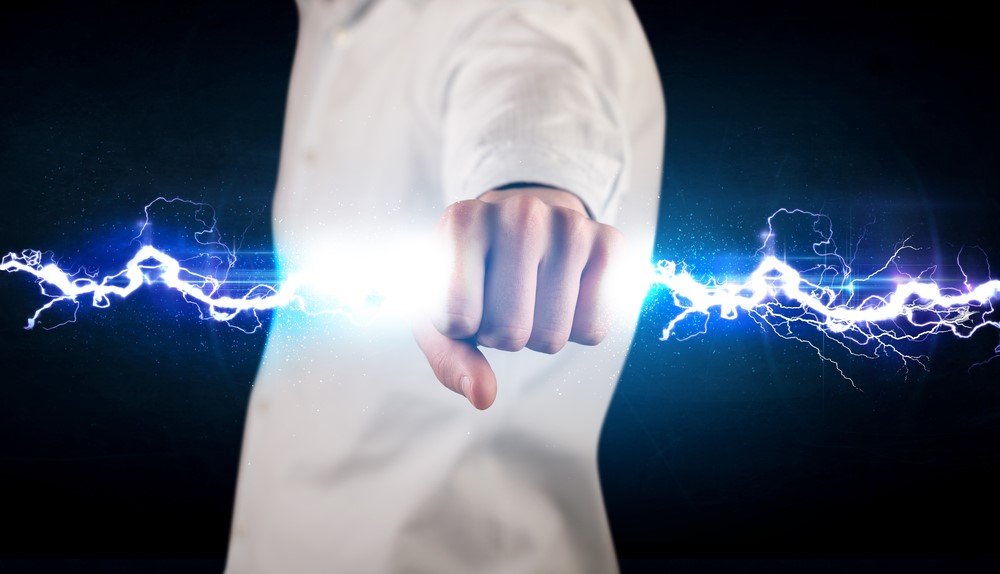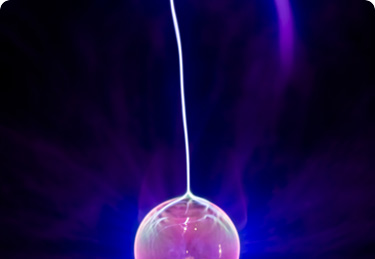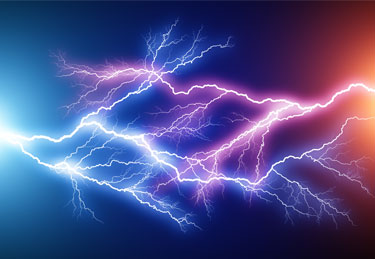Search
So how do people become electrostatically charged in an industrial setting? – A lesson in static electricity

TWO principal routes:
- Triboelectrification (that is charging by contact and separation), or
- Induction (that is charging by being close to something else that is already charged)
Let’s explore these a little.
If you walk across a floor, then your shoes are repeatedly making and breaking contact with the floor. The contact potential difference between shoe and floor will separate charges and can lead to build up of charge on the walking person through triboelectrification. For those deep thinkers reading this, the answer is yes……; if the floor is insulating, you do leave oppositely charged ‘footprints’ on the floor behind you as you go! Charge cannot be created or destroyed; it can only ever be separated (electrons removed from atoms) so a positively charged person implies negative footprints left behind.
If you think about it there are many examples of triboelectrification taking place between people and their surrounding in industrial settings. Operator and their clothing, brushing against process equipment, scooping powder our of a container, and more.
Induction charging is a bit harder to get your head around, but to put it simply, if there is a charged object (big bag – an FIBC, for example) and you are standing near it, charge could be attracted through you and towards the charged object. If you stand in the electric field of the charged bag for long enough, that is stand near the big bag for a while, then just a little conduction of charge through your footwear will leave you charged when you move away.
Enough energy?
Both tribo-charging and induction charging take place routinely in many industrial environments and indeed fires and explosions do occur in industry that are caused by static electricity on people. Static sparks from people can be created with energy content up to a few 10’s of milli-Joules – which is more than enough to ignite the vapor-air mixtures surrounding most solvents handled on industrial plant. What’s more, there are also some combustible dust clouds created in powder handling operations on plant that can also be ignited by sparks from people – leading to dust explosions. This is why we regularly measure the Minimum Ignition Energy (MIE) of dust clouds for our clients – to answer the question ‘what is the smallest electrostatic discharge energy capable of igniting my powder?’
Will the electrostatic charge build-up on you……. or will it not?
Charge generation is one thing, but if that charge is able to conduct away as fast as it is generated then there will be no build-up of charge on the person – and no spark ignition from the person.
Whilst it is actually quite difficult to prevent charge generation, it is fortunately less challenging to prevent its build-up. If a person is wearing static dissipative or conductive footwear and if the floor on which they stand has adequately conductivity, then hazardous charge build-up on the body can be prevented. Here it is all about the balance between rate of charge generation and rate of charge loss to earth. In practice, in most situations we tend to accept as safe an operator resistance to ground in the range 1M ohm to 100M ohm (ref 1); this is the combined resistance of footwear and floor from the operator’s skin to electrical ground. The lower limit is present to provide some protection from mains electric shock. As ever, there are a few exceptions where this resistance range may not be enough to assure freedom from ignition, however; for example, if a low MIE gas is present (e.g., hydrogen) or perhaps a sensitive energetic explosive substance.
In Summary
We have seen that charge can quite readily be generated on people when they move, and as our video demonstrates you can ignite flammable vapor atmospheres with sparks from a person. Some dust cloud atmospheres can be similarly ignited. On the other hand, conduction of charge through footwear and floor can take away hazardous charge.
Of course, controlling static electricity on people may in some circumstances require more precautions. In this coffee-time read, we have not addressed the influence that synthetic clothing could have on the situation, nor on the effect of local humidity, nor have we looked at the role that electrically insulating gloves have in isolating other spark-supporting objects.
Electrostatic Safety
At Stonehouse, we undertake many specialized electrostatic hazards assessments for our clients. If you are interested in having us conduct one of these assessments on your facility – or if you would just like a no-obligation chat about a specific electrostatic concern you have, just pick up a phone (+1 609 455 0001) or email us at [email protected]. We look forward to hearing from you.
Static electricity is a subtle phenomenon and causes fires and explosions in plants large and small. Don’t let its subtlety catch you out!
Reference
NFPA 77: Recommended Practice on Static Electricity NFPA, 1 Batterymarch Park, Quincy, MA 02169-7471

Get in touch
To learn more about our expertise and services in dust explosion prevention & mitigation, call us at +1 609 455 0001 or email us at [email protected] today.
We also offer tailored virtual and in-company process safety training programs on Dust Explosions, Static Electricity and HAC (Hazardous Area Classification) and more. Find further information here.









